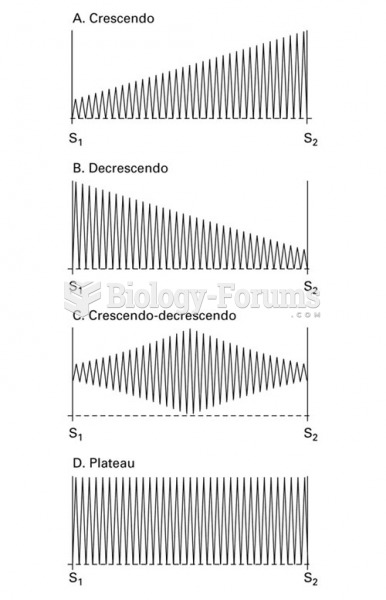|
|
|
During the twentieth century, a variant of the metric system was used in Russia and France in which the base unit of mass was the tonne. Instead of kilograms, this system used millitonnes (mt).
The Centers for Disease Control and Prevention has released reports detailing the deaths of infants (younger than 1 year of age) who died after being given cold and cough medications. This underscores the importance of educating parents that children younger than 2 years of age should never be given over-the-counter cold and cough medications without consulting their physicians.
More than 30% of American adults, and about 12% of children utilize health care approaches that were developed outside of conventional medicine.
People about to have surgery must tell their health care providers about all supplements they take.
The average human gut is home to perhaps 500 to 1,000 different species of bacteria.







